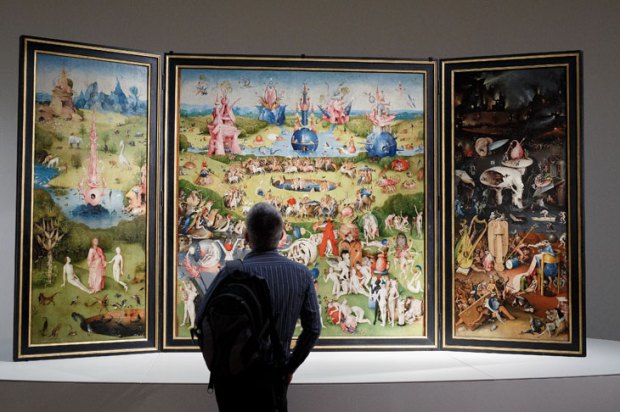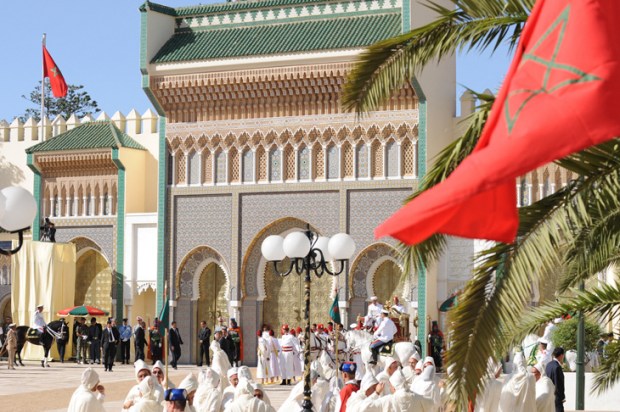‘Vas bien Fidel’ (going well Fidel) are the words emblazoned across a government building facing the Revolution Square in Havana. Things might be going well for the Castro family, after all they will soon celebrate sixty years in power, but I don’t see much evidence that things are going so well for the average Cuban in my brief visit to the country. The grand boulevards and buildings of the Spanish colonial era are crumbling and decaying. The consumer comforts are stuck in the 1950s – before the revolution chilled enterprise and isolated the country from modernity. Cuba is a fascinating museum of the past preserved by an official state ideology of socialism.
We are driven around Revolution Square in a 1956 Ford Fairlane Convertible. I have to tell you that they don’t make cars like that these days. In fact, the taxi fleet of Havana is comprised of old Fords, Dodges and Chevvies that were on the road before the revolution and are still going. They have been patched up and repaired and fixed with purloined parts and driven on broken-down roads for over sixty years, but never replaced because of the US trade embargo. The whole thing is a testament to the engineering marvel that was Detroit in the 1950s. My driver, Julio, inherited the convertible from his father. ‘What did you do before driving?’ I ask him. ‘I used to be an Endocrinologist, but this pays better,’ he says.
Like any good socialist country Cuba has a rationing system. Each person is entitled to a monthly ration of beans and oil and rice and sugar and coffee. The ration for eggs is five per month. The only problem is that the government stores exchanging goods for ration cards regularly run out of supplies. They look lonely these stores with no produce. If your average Cuban can get access to the convertible (western pegged) currency, they can shop in more up-market stores designed to cater for foreigners. Socialism is supposed to be classless but Cuba runs a two-tiered currency system which means two-tiered access to goods and services.
When we visit the government-owned cigar factory in central Havana, the temperature is hot and humid. There is no air-conditioning. Quite literally, it is a sweat shop. Workers sit at wooden desks, five to a row, twenty rows deep, hand-rolling tobacco leaf into Cuban cigars. (Spoiler alert: I know you have been told that exclusive cigars are rolled on the thighs of beautiful maidens but take it from me – you are smoking a delusion). So committed to the business are these workers that many actually smoke cigars while they work. In the middle of the smoke and sweat, a lector, or reader, reads out aloud to help relieve the repetitive boredom of it all. Our guide thinks workers can earn up to $US100 per month if they are good at their job.
From Havana we make for the town of Santa Clara, the site of a decisive moment in the defeat of the Battista regime and the triumph of the revolution in 1958. Here is a fine memorial to the legendary ‘Che’ Guevara. ‘Che’, we learn, was an Argentinian doctor who fomented revolution all over Latin and South America. He had the charismatic good looks you need to be a revolutionary. But his real name was Ernest. Ernest is not a revolutionary name so he adopted the name ‘Che’ which means ‘friend’ or ‘buddy’.
After the revolution he was, for a time, appointed to run the Central Bank of Cuba. Ernest is a good name for a Central Baker but ‘Che’ preferred the revolutionary life. He moved on to Africa and eventually Bolivia where he was captured and executed. ‘Che’ had the good fortune to die young in the field, which is how revolutionaries should go. As Fidel has realised, revolutionaries should never have to live so long as to see the results of their efforts.
So we make our way to the Bay of Pigs, the site of the abortive counter-revolutionary landing of exiled Cubans in 1961, supported by the CIA and designed to overthrow the Castro regime. There is a first class memorial to the heroes of the battle there. Of course it doesn’t give enough credit to the Kennedys (John Kennedy was then President) who lost their nerve and refused to provide sufficient air cover meaning those who relied on American assurances of support were killed or captured. Fidel Castro emerged as the giant-killer who defeated the US. This cemented the hold of his family on the island and emboldened him to declare it a Socialist State.
Here is a very curious thing. During the battle Fidel Castro stationed his forward headquarters at a nearby town called ‘Australia’. I guess there must have been an Australian interest in the large sugar mill in the town which gave rise to the name. There’s one for the trivia buffs. The Bay of Pigs invasion was defeated from Headquarters in Australia.
Cuba before the revolution was a major food producer and exporter. The sugar industry was a huge earner of foreign exchange. After years of socialism this industry has failed, like most of the other agricultural industries. As a result, in a rural and agricultural country, the population suffers from rationing and shortages. As we drive out of the Bay of Pigs there is a massive Billboard with a smiling face of Hugo Chavez. He is described as Cuba’s best friend. He plunged his country – Venezuela – into shortage and starvation by aping the Cuban-style of socialism. The Billboard declares: ‘Only socialism make possible the impossible.
It is a fitting reminder. There is no other way a country with a tropical climate and fertile soil could struggle to feed its population.
Got something to add? Join the discussion and comment below.
Get 10 issues for just $10
Subscribe to The Spectator Australia today for the next 10 magazine issues, plus full online access, for just $10.











Comments
Don't miss out
Join the conversation with other Spectator Australia readers. Subscribe to leave a comment.
SUBSCRIBEAlready a subscriber? Log in